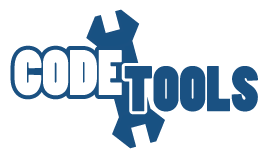bargraph (1)
NAME
bargraph - compile bar graphs into pic inputSYNOPSIS
bargraph [ filename ... ]DESCRIPTION
bargraph is a perl script which takes a set of Y data with labels and generates a (human readable) pic script that will produce the bar graph. The output (pic input) is commented and is designed such that you should be able to go in and adjust it to fit your document should you need to do so.
The input data format is:
3 foo bar 9 bigger foo "Silly example
with output like
bigger
foo
+----------+
| |
foo | |
bar | |
+----------+ | |
| | | |
+----------+ +----------+
-------------------------------
3 9
Silly example
OPTIONS
The following command line options are available- -big
- Make the x/y defaults be 7.5 inches, crank up the title size, and don't put a spacer at the top. Used for printing a graph on a full page.
- -nobox
- Do not put an outline box around the bargraph.
CONTROL OPTIONS
The following may be included in the graph to control the format of the graph. They must be at the beginning of a line and by themselves.- %ps <ps>
- point size. Default is 10.
- %ft <ft>
- font. Default is CB.
- %labelgap <val>
- the space in inches between fill labels. The bars may be filled with different fill values (no patterns yet, pic doesn't do that). If you want to label these, the labels are labelgap inches apart. Default is 1.5 inches.
- %xsize <val>
- the width of the graph in inches. Default is 7 inches.
- %ysize <val>
- the height of the graph in inches. Default is 6 inches.
- %Title n|s <title>
- the title of the bargraph. The title option is followed by a a "n"orth (top) or "s"outh (bottom) indicator which controls placement of the title. No default.
- %titleplus <val>
- increases the size of the title in pointsize. Default is 0.
- %boxpercent <val>
- a value between 0 and 100 that controls how closely the bars are to each other. A value of 100 means the bars touch. Default is 75.
- %worse <D> <W>
- An idiot arrow is drawn to indicate which way is worse. <D> is the direction and must be "up" or "down". <W> is the location specifier and must be one of "n"orth, "w"est, "e"ast, "s"outh, "nw" northwest, ne, sw, se, etc.
- %better <D> <W>
- An idiot arrow is drawn to indicate which way is better. <D> is the direction and must be "up" or "down". <W> is the location specifier and must be one of "n"orth, "w"est, "e"ast, "s"outh, "nw" northwest, ne, sw, se, etc.
- %fakemax
- pretend that one data point was this big when autoscaling. THis is used to make a series of bargraphs be all drawn to the same scale.
FILL CONTROL
Each datum may be follwed by a fill specifier as follows
3 foo bar %fill.5
Labels may be specified to group a set of data that all have the same data. If a line appears like
%label.5 The foo bar data
then you get a label below the graph.
SEE ALSO
gtroff(1), graph(1), gpic(1)TODO
Make a -horizontal option that prints the graphs the other way.Hack pick to get access to postscripts stipple patterns.
BUGS
This isn't done. It isn't integrated with the groff preprocessor yet. It doesn't know about .GS/.GE thingys. I use it to manually generate a pic file and then include that. I have to talk to James to see if he wants it as part of the gpic stuff.
